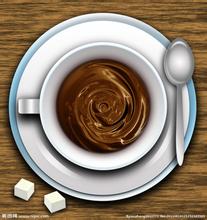Introduction to the flavor description and quality characteristics of Latin American coffee beans
What are the coffee beans in Latin America?
Mexican coffee is a coffee-producing area from Cottpe and Veracruz in the north to Plumas in the central Oaxaca region to Chiapas in the southernmost, and the flavor varies from region to region. Although there are many producing areas in Mexico, but because the quality stability is not high, so many attempts can be made to select the high quality ones. Basically, the coffee standards of Oaxaca and Chiapas are relatively neat. Chiapas is close to the Vevetnango region of Guatemala, so its flavor is similar. In fact, Mexico is also a big producer of organic coffee with organic certification. Generally speaking, Mexican coffee has a light flavor, but it is mild and delicate, and the flavor is good, so it is worth a try.
Columbia (Colombian) aroma 3.5 minutes brightness 4.5 minutes mellow 3.5 minutes flavor 4.5 points aftertaste 4.5 points
Suitable for baking: Medial/City/Full city/Espresso/Dark/French Columbia beans are one of the few coffee beans that range from shallow roasting to very deep roasting, from clean light roasting to deep roasting sweetness, in such a wide range
Columbia beans will have different styles and features.
Once the second largest coffee producer after Brazil, Colombia, which has been overtaken by Vietnam to become the world's largest supplier of washed beans, has become synonymous with good coffee after years of image-building. Despite the balanced flavor, thick texture, famous sour taste and aroma, most Colombian beans are mediocre and have no personality if you taste them carefully. When choosing Colombian beans, you should not only look at the grade marks, but also pay attention to the producing areas, because Colombia is currently graded according to the size of beans, so the Supremo or Excelso on the coffee bag refers to the size of beans rather than the quality, but the size of beans is not necessarily related to the flavor of the entrance, but is closely related to the altitude of the place of origin and taste, so this grading system is often criticized. In fact, most of the medium,
South American countries have switched to altitude classification, and only Colombia maintains this traditional classification system, which many Colombian coffee makers have recognized and have begun to demand a change in the classification system. Colombia's famous producing areas include Medellin, Armenia and Manisales, so the word MAM is sometimes seen on coffee bags, indicating that the coffee beans may come from any of these three producing areas. Almost all of Colombia's finest coffee beans come from traditional small farms, which grow old coffee trees from Typica, which are well planted and carefully harvested and treated, so they are of high quality but relatively low in yield.
Costa Rica (Costa Rica) aroma 3.5 minutes brightness 4.5 minutes mellow 3 minutes flavor 4.5 points aftertaste 4.5 points
Suitable for baking: if Light/Medial/City wants to show the perfectly balanced flavor of Costa Rica, it can never be baked deeply, it is recommended that the degree of City can be done, or even the beans can be added as soon as the first explosion is over, at this time the flavor and flavor will be both, close to the second explosion is the deepest limit of baking, do not enter the second explosion and waste the best coffee beans.
The best Costa Rican coffee has a chocolate flavor in its aftertaste. Because Tarasu is so famous, the fame of other producing areas is less known to the world, such as the Bols volcanic area and the Sanshui River producing area. The three major volcanic areas even produce excellent coffee in Orosi and so on on the north side of the Atlantic Ocean. Another problem with strong brands is that many coffees that are not produced in Tarasu are also mixed with fish eyes and pictures of Tarasu, so it is the only way to try it in person.

Important Notice :
前街咖啡 FrontStreet Coffee has moved to new addredd:
FrontStreet Coffee Address: 315,Donghua East Road,GuangZhou
Tel:020 38364473
- Prev

Guatemala Coffee Manor Flavor description, Taste, quality, characteristics, region introduction
Guatemalan Coffee Manor Guatemalan coffee has a strong aroma, even if you don't drink it, just smelling that aroma is already a pleasure. Antigua coffee has a rich and velvety mellow, rich and lively aroma, and fine sour taste. When the attractive fragrance lingers on the tip of your tongue, there is an indescribable mystery. You may feel dull during the first bite.
- Next

Introduction to the taste grinding scale of the flavor description method of the coffee manor in Guatemala
Guatemalan coffee beans introduce Guatemalan coffee has a strong aroma, even if you do not drink, just smelling that aroma is already a kind of enjoyment. Antigua coffee has a rich and velvety mellow, rich and lively aroma, and fine sour taste. When the attractive fragrance lingers on the tip of your tongue, there is an indescribable mystery. During the first bite, you may feel flat.
Related
- Detailed explanation of Jadeite planting Land in Panamanian Jadeite Manor introduction to the grading system of Jadeite competitive bidding, Red bid, Green bid and Rose Summer
- Story of Coffee planting in Brenka region of Costa Rica Stonehenge Manor anaerobic heavy honey treatment of flavor mouth
- What's on the barrel of Blue Mountain Coffee beans?
- Can American coffee also pull flowers? How to use hot American style to pull out a good-looking pattern?
- Can you make a cold extract with coffee beans? What is the right proportion for cold-extracted coffee formula?
- Indonesian PWN Gold Mandrine Coffee Origin Features Flavor How to Chong? Mandolin coffee is American.
- A brief introduction to the flavor characteristics of Brazilian yellow bourbon coffee beans
- What is the effect of different water quality on the flavor of cold-extracted coffee? What kind of water is best for brewing coffee?
- Why do you think of Rose Summer whenever you mention Panamanian coffee?
- Introduction to the characteristics of authentic blue mountain coffee bean producing areas? What is the CIB Coffee Authority in Jamaica?

